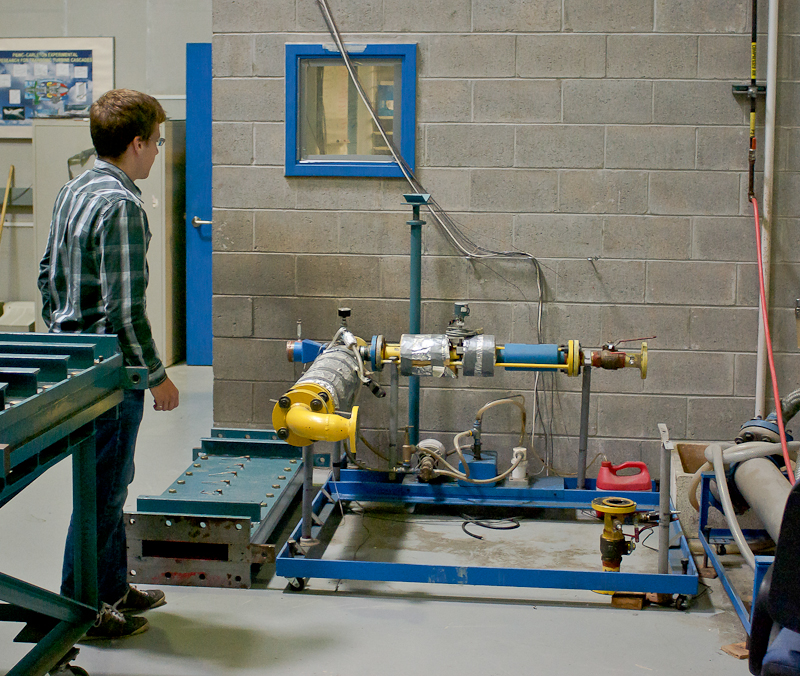
Carleton’s engineering department received $1.44 million this May from the federal government to build a pilot-scale electricity generator.
The grant will pay for materials and software licenses to make the generator, Carleton professor and project manager Henry Saari said.
Both undergraduate and graduate students, as well as professors, are working on the project.
About 80 per cent of the turbine’s power will go to producing electricity, an improvement over commercial-scale steam-powered generators, which devote about 60 per cent of their power to producing electricity, Saari said.
It will be more efficient because it uses the water-like gas known as supercritical carbon dioxide instead of steam to drive the electricity generator, Saari said.
“It is easier to pump water to a higher pressure than it is to compress a gas to a higher pressure,” Saari said.
Gas or fluid needs to be compressed to keep it flowing through the generator. The generator is called a Supercritical-CO2 Brayton Cycle Demonstration Loop.
The flow stops when atoms and molecules reach the same pressure and temperature, said Sukhveer Sanghera, a Carleton graduate engineering student who has been involved in the project since last fall.
Research on the generator began last fall, and about 25 fourth-year students will join this fall as part of their capstone project, Saari said.
“It’s nice for the undergrads as well to be involved in something real, where shortly after they do their designs, they will be able to see their designs being . . . built,” Saari said.
“We might have still designed it just to get experience, but it wouldn’t have been built without funding . . . it does cost a lot to buy the parts and get everything approved and . . . get a stamp by professional engineers,” Sanghera said.
Students will be part of all aspects of the build, including thermo-dynamic cycle analysis, aerodynamic structural design, the heat exchanger, control system, data acquisition system, and mechanical design issues related to those processes, Saari said.
He said the intellectual property will belong to him and the students.
SaskPower, a Saskatechewan-based electricity company, is a partner on the project. It is providing technical and engineering support, according to a Carleton press release, and feasibility testing for commerical use, according to Saari.
Natural Resources Canada (NRC) gave the money to the Department of Mechanical and Aerospace Engineering as part of the ecoENERGY Innovation Initiative, according to the NRC website.
The generator could operate using different heat sources, such as geothermal, solar, waste, or nuclear. For this project, the generator will use coal. The NRC is looking at ways to burn the fossil fuel without emitting carbon dioxide and toxins into the air, according to their website.
One method, called carbon capture and storage, involves capturing the carbon dioxide produced by the generator and storing it underground.
According to SaskPower spokesperson Tyler Hopson, the company will be selling the captured carbon dioxide to Cenovus, a Canadian oil company.
Saari said the captured carbon will be used for enhanced oil recovery, a process by which carbon dioxide is injected underground to promote oil flow.
SaskPower traditionally relies on coal-generated electricity, which accounts for over half the electricity produced in the province, according to a SaskPower customer guide.
The Ontario Liberal government, however, is phasing out all coal-powered electricity generation in the province, according to Ottawa-Centre MPP Yasir Naqvi. Ontario would be the “first jursidiction in North America” to do so, Naqvi said May 21 at the unveiling of Carleton’s new sustainability strategy.





